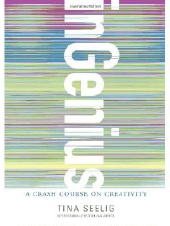Stanford’s Tina Seelig on Creativity: “Everything You See is Ripe for Innovation”
In her new book “inGenius: A Crash Course on Creativity,” Stanford’s Tina Seelig explores how to mine and unleash the capacity for creativity and innovation.
Topics

In her new book, Stanford’s Tina Seelig says, “Being able to connect and combine nonobvious ideas and objects is essential for innovation and a key part of the creative-thinking process.”
Tina Seelig called innovation “a mobius strip of culture, knowledge, imagination, resources, attitude and habitat” at last week’s TEDxStanford 2012 conference, and in the introduction to her new book inGenius: A Crash Course on Creativity (Harper Collins, 2012), she points out that most of us are not as creative as we have the potential to be.
“We don’t look at everything in our environment as an opportunity for ingenuity,” she writes. “In fact, creativity should be an imperative.”
Seelig is executive director of the Stanford Technology Ventures Program in the School of Engineering, and she teaches a course on creativity and innovation at Stanford’s Hasso Plattner Institute of Design. Her interest in creativity goes back to when she was earning a Ph.D. in neuroscience at Stanford’s Medical School, says a story by the school.
Seelig uses an “Innovation Engine” graph to explain how she thinks creativity works. The graph has six elements: knowledge, imagination and attitude, which we draw from internally, and resources, culture and habitat, which come at us externally. She talks about them in this short video:
In her book, Seelig describes a seemingly simple exercise she does with students on the first day of class: redesign a name tag. Students quickly come up with large paper tags with names written in large print — which Seelig admires and then puts through the shredder. Think harder, she says, about what we really want to get out of name tags.
Soon, students are designing things that will better stimulate conversation between people who don’t know each other. There are custom t-shirts covered with words and pictures of the places they have lived and sports they like. There are earpieces that feed facts about the person they’re talking to. There are colored bracelets for wearers to signal if they’re feeling cheerful, melancholy, stressed or fortunate.
“This assignment is designed to demonstrate an important point,” Seelig writes. “Everything you see is ripe for innovation.�
